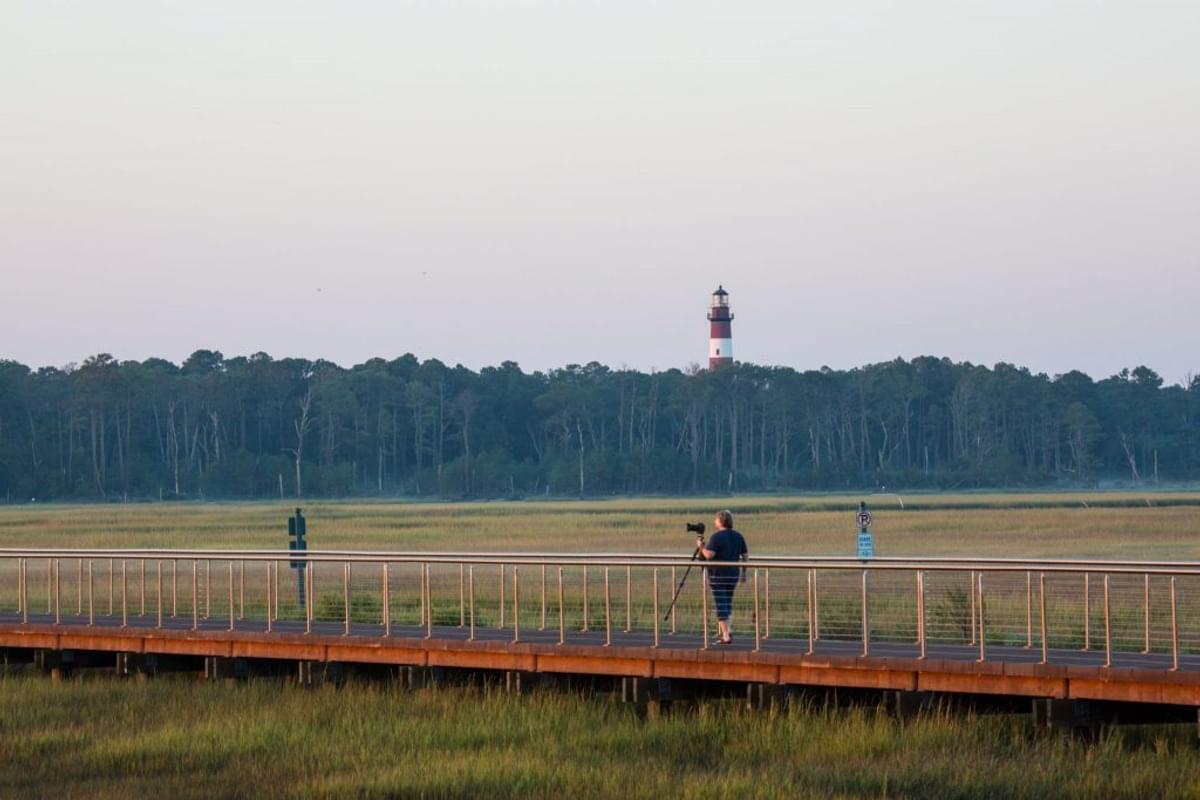**CHINCOTEAGUE NWR
**CHINCOTEAGUE NWR
Chincoteague National Wildlife Refuge (NWR) 8231 Beach Road Chincoteague Island, Virginia 23336-2149
Chincoteague NWR webpage (U.S. Fish & Wildlife Service)Chincoteage NWR fees table
Chincoteague NWR Fees Table
Chincoteague NWR webpage (U.S. Fish and Wildlife Services)
Chincoteague NWR webpage (VA Birding & Wildlife Trail)
Tips for Birding
Make note of the tide charts and the weather. Winter and the month of May are always exceptional for birding. Stretch your days to the limit by birding from dawn til dusk. Avoid high summer months or you'll be devoured by biting insects of all kinds.
Birds of Interest
See individual hotspot pages for noteworthy birds.
About this Location
This hotspot is fine to use if you spend a whole day birding and need to dump your data somewhere, but it is preferred that you use the individual hotspots in the Chincoteague NWR group to indicate specific locations, changes of habitat, and time of day.
About Chincoteague National Wildlife Refuge
See all hotspots at Chincoteague National Wildlife Refuge
This is one of the most heavily visited refuges in the national wildlife refuge system and acts as a gateway to the accessible barrier islands on the East Coast. A visitor center, bird checklists, beach access, and an array of wildlife species make this one of the nation’s premier sites for easily accessible wildlife viewing.
Administered by the U.S. Fish and Wildlife Service, Chincoteague National Wildlife Refuge is renowned for its diverse bird habitat where more than 320 species are known to use the refuge regularly during migration. It has at least 100 species of birds present at any given time. Shorebird concentrations at Chincoteague are so great during fall migration that it ranks as an important stopover area for migrating birds in the U.S east of the Rockies. The refuge was also ranked second in shorebird diversity among all 450 sites in the International Shorebird Survey in 1985. Chincoteague is also famous for the herds of Chincoteague ponies that were first introduced to the island in the 17th century. Much of the refuge’s operations focus on managing it for the benefit of the diverse wildlife species.
Located on the Indigenous homelands of the Pocomoke and Occohannock people, Chincoteague National Wildlife Refuge protects beach, dune, marsh, and maritime forest habitats. Established in 1943 to protect migratory birds, this refuge is now one of the most visited in the United States. This gem of Eastern Virginia is a birder's paradise, as well as the home of cultural treasures such as Assateague Lighthouse and the world-famous Chincoteague ponies.
Open year-round from dawn to dusk. See the fees table link above for information regarding fees and permits.
Notable Trails
With over 15 miles of hiking trails and walkable beach, birders will want to cover a lot of ground. Fortunately, this refuge provides some of the best handicap-accessible birding around. The following options cover most of the prime habitat.
For a complete list of all the trails, click the map link listed above.
Wildlife Loop: 3.25 miles, paved loop
This trail offers frequent benches for resting and overlooks for wildlife viewing. Vehicles can drive the loop any day from 3 p.m. to dusk. You’ll see plenty of wading and shorebirds in the mudflats, as well as waterfowl in the shallow waters.
Swan Cove Trail: 1 mile, paved
Branching off the Wildlife Loop, this trail is one of the refuge’s most popular routes to the beach. The trail is bordered by shrub and thicket habitat. Here you may see many different species of pollinators. If you’re lucky, you may even spot the occasional muskrat or otter.
Black Duck Trail: 1 mile, paved
Also branching from the Wildlife Loop, this trail is a great place to look for turtles and songbirds.
Woodland Trail: 1.6 miles round trip, paved
Branching from the Black Duck Trail, this pathway leads you through the beautiful pine forest to an overlook where you can sometimes catch a glimpse of the famous Chincoteague ponies. As you travel along the trail, keep an eye out for the flashing silver fur of the Delmarva fox squirrel. This formerly endangered species was officially delisted in December 2015 as a result of decades of conservation work performed by refuge biologists, state agencies, and recovery partners.
Features
Restrooms on site
Wheelchair accessible trail
Entrance fee
Roadside viewing
Content from Chincoteague NWR webpage (U.S. Fish & Wildlife Service) and Chincoteague NWR webpage (U.S. Fish and Wildlife Services)
Last updated June 3, 2023
 Assateague Lighthouse from causeway
Assateague Lighthouse from causewayChincoteague Chamber of Commerce